Webb stickers for Ariane 5 fairing
Friday, 03 December 2021 12:55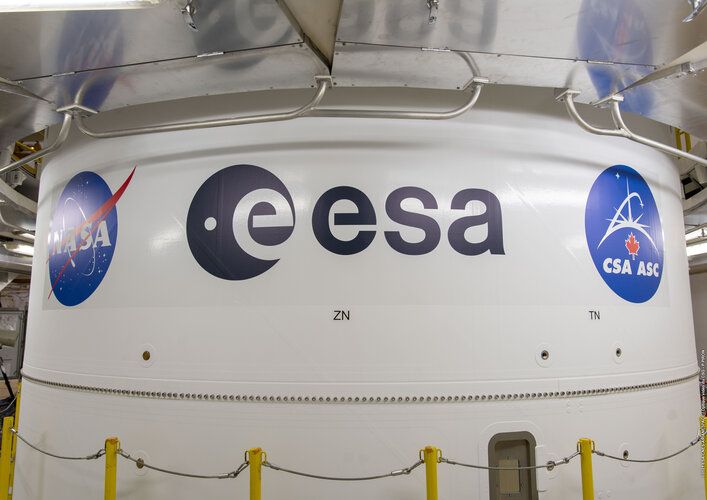 Image:
Webb stickers for Ariane 5 fairing
Image:
Webb stickers for Ariane 5 fairing NASA awards funding to three commercial space station concepts
Friday, 03 December 2021 11:34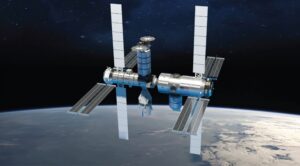
NASA issued awards Dec. 2 valued at more than $400 million to three groups of companies to advance development of commercial space stations, keeping those efforts on track to succeed the International Space Station by the end of the decade despite skepticism from the agency’s inspector general.
Matthias launches into first month of space science
Friday, 03 December 2021 10:04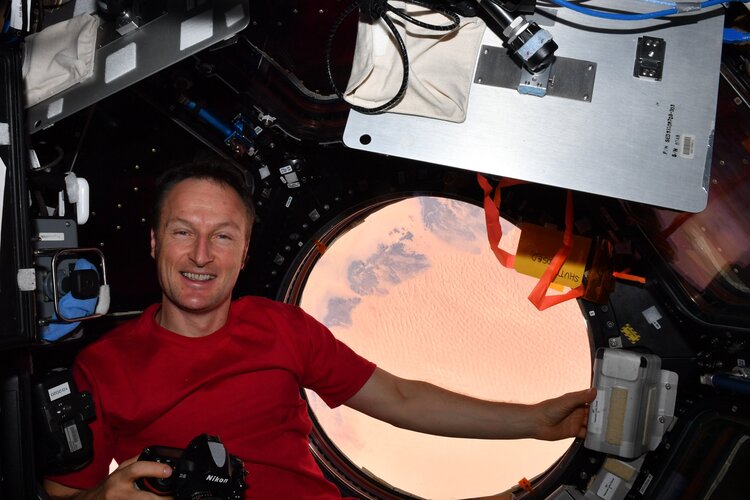
Barely three weeks into space life, first-time flyer Matthias Maurer has operated a robotic arm twice, welcomed a docking module, slept in a brand-new bed and changed plans a few times due to space debris alerts. Even science has not been routine, as he ran a handful of experiments for the very first time in orbit.
Rover escapes from sand trap
Friday, 03 December 2021 09:00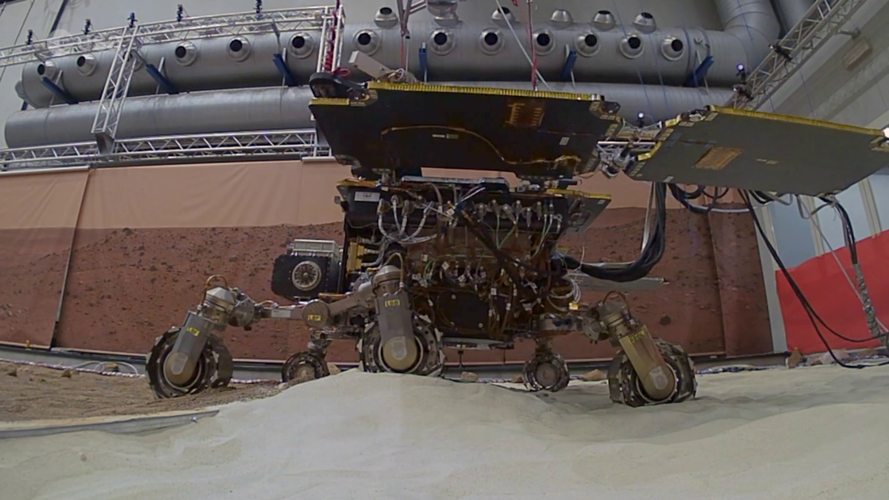 Video:
00:01:09
Video:
00:01:09
The ExoMars rover used in the Earth-based Mars Terrain Simulator makes escaping from a sand trap look easy in this exercise.
The rover initially has its front two wheels almost completely buried in sand, but easily escapes using its unique wheel-walking mode.
It takes about 20 minutes to complete the 2 m drive – slow and careful being the key to getting out of a difficult situation.
Rovers on Mars have previously been caught in sand, and turning the wheels dug them deeper, just like a car stuck in mud or snow. To avoid this, the ExoMars rover Rosalind Franklin
Space Force General says daily attacks on US satellites are 'Sending a Message'
Friday, 03 December 2021 08:37 In recent weeks, the US media outlets have been ramping up fears about adversaries especially China - allegedly planning different ways to target the United States and beefing up its weaponry in order to do so. Under this pretext, calls have emerged for Washington to "catch up??
US Space Force General David Thompson said that American satellites are being attacked "every single day" by adv
In recent weeks, the US media outlets have been ramping up fears about adversaries especially China - allegedly planning different ways to target the United States and beefing up its weaponry in order to do so. Under this pretext, calls have emerged for Washington to "catch up??
US Space Force General David Thompson said that American satellites are being attacked "every single day" by adv Team builds first living robots that can reproduce
Friday, 03 December 2021 08:37 To persist, life must reproduce. Over billions of years, organisms have evolved many ways of replicating, from budding plants to sexual animals to invading viruses. Now scientists have discovered an entirely new form of biological reproduction - and applied their discovery to create the first-ever, self-replicating living robots.
The same team that built the first living robots has discove
To persist, life must reproduce. Over billions of years, organisms have evolved many ways of replicating, from budding plants to sexual animals to invading viruses. Now scientists have discovered an entirely new form of biological reproduction - and applied their discovery to create the first-ever, self-replicating living robots.
The same team that built the first living robots has discove DARPA's ReSource Program turns waste into purified products, food
Friday, 03 December 2021 08:37 Launched in 2021, DARPA's ReSource program aims to revolutionize how the military procures critical supplies on the battlefield by engineering self-contained, integrated systems that rapidly produce large quantities of supplies from feedstock collected on-site.
Performer teams are tasked with developing systems to break down mixed waste, including common plastics, reformulate the waste at
Launched in 2021, DARPA's ReSource program aims to revolutionize how the military procures critical supplies on the battlefield by engineering self-contained, integrated systems that rapidly produce large quantities of supplies from feedstock collected on-site.
Performer teams are tasked with developing systems to break down mixed waste, including common plastics, reformulate the waste at Earth from Space: White Nile, Sudan
Friday, 03 December 2021 08:00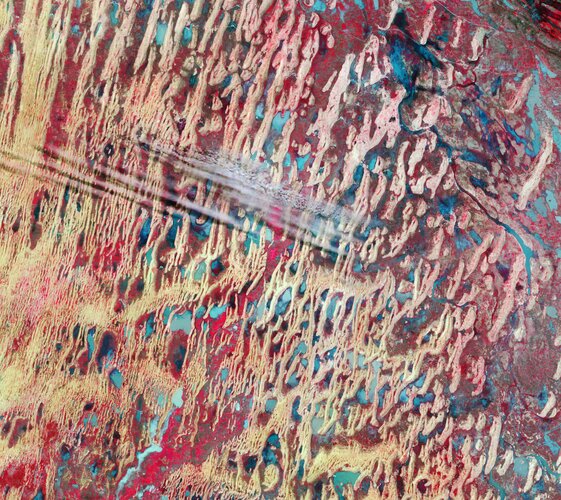
A part of the White Nile state in Sudan is featured in this false-colour image captured by the Copernicus Sentinel-2 mission.
Orbex to use Calor BioLPG for Prime launch
Friday, 03 December 2021 00:06 Orbex and Calor have entered into an agreement that will see the iconic UK gas company supply the ultra-low carbon fuel that will launch the Orbex Prime rocket.
Under the terms of the new deal, Calor will supply Orbex with its BioLPG solution, a clean-burning propane produced from renewable feedstocks such as plant and vegetable waste material. This reduces CO2 emissions by up to 80 per ce
Orbex and Calor have entered into an agreement that will see the iconic UK gas company supply the ultra-low carbon fuel that will launch the Orbex Prime rocket.
Under the terms of the new deal, Calor will supply Orbex with its BioLPG solution, a clean-burning propane produced from renewable feedstocks such as plant and vegetable waste material. This reduces CO2 emissions by up to 80 per ce Northrop Grumman signs NASA to design space station for low earth orbit
Friday, 03 December 2021 00:06 Northrop Grumman has signed a Space Act Agreement with NASA under the Commercial Low-Earth Orbit Development program for $125.6 million to design a safe, reliable and cost-effective commercial free-flying space station in low Earth orbit (LEO). Northrop Grumman's commercial space station design will use current flight systems and advanced crew-focused technology under development that allows for
Northrop Grumman has signed a Space Act Agreement with NASA under the Commercial Low-Earth Orbit Development program for $125.6 million to design a safe, reliable and cost-effective commercial free-flying space station in low Earth orbit (LEO). Northrop Grumman's commercial space station design will use current flight systems and advanced crew-focused technology under development that allows for SpaceX successfully launches latest Starlink fleet from Florida
Friday, 03 December 2021 00:06 SpaceX on Thursday launched 48 Starlink spacecraft from Florida as part of its plans to develop a second generation of communications satellites.
The Falcon 9 rocket successfully lifted off from Complex 40 at Cape Canaveral Space Force Station at about 6:12 p.m. EST.
SpaceX was also able to successfully land the first stage booster for the ninth time, its 89th successful recovery of
SpaceX on Thursday launched 48 Starlink spacecraft from Florida as part of its plans to develop a second generation of communications satellites.
The Falcon 9 rocket successfully lifted off from Complex 40 at Cape Canaveral Space Force Station at about 6:12 p.m. EST.
SpaceX was also able to successfully land the first stage booster for the ninth time, its 89th successful recovery of Astronauts conclude spacewalk to replace antenna at space station
Friday, 03 December 2021 00:06 Two NASA astronauts successfully wrapped up a spacewalk Thursday to replace a communications antenna faster than expected outside the International Space Station.
The new antenna was installed at around 9:45 a.m. EST, which NASA said was almost 90 minutes ahead of schedule. The pair spent the next few hours performing additional tasks to help prepare for future spacewalks.
The sp
Two NASA astronauts successfully wrapped up a spacewalk Thursday to replace a communications antenna faster than expected outside the International Space Station.
The new antenna was installed at around 9:45 a.m. EST, which NASA said was almost 90 minutes ahead of schedule. The pair spent the next few hours performing additional tasks to help prepare for future spacewalks.
The sp Rocket Lab reveals Neutron launch vehicle's advanced architecture
Friday, 03 December 2021 00:06 Building on Rocket Lab's proven experience developing the Electron launch vehicle, the second most frequently launched U.S. rocket annually since 2019, the advanced 8-ton payload class Neutron launch vehicle is designed to transform space access by delivering reliable and cost-effective launch services for satellite mega-constellations, deep space missions and human spaceflight. During today's l
Building on Rocket Lab's proven experience developing the Electron launch vehicle, the second most frequently launched U.S. rocket annually since 2019, the advanced 8-ton payload class Neutron launch vehicle is designed to transform space access by delivering reliable and cost-effective launch services for satellite mega-constellations, deep space missions and human spaceflight. During today's l NASA awards $415 mn to fund three commercial space stations
Friday, 03 December 2021 00:06 NASA on Thursday awarded three companies hundreds of millions of dollars to develop commercial space stations it hopes will eventually replace the International Space Station, which is due to retire around the end of the decade.
Jeff Bezos' Blue Origin, aerospace company Nanoracks, and defense contractor Northrop Grumman won $130 million, $160 million and $125.6 million contracts respectivel
NASA on Thursday awarded three companies hundreds of millions of dollars to develop commercial space stations it hopes will eventually replace the International Space Station, which is due to retire around the end of the decade.
Jeff Bezos' Blue Origin, aerospace company Nanoracks, and defense contractor Northrop Grumman won $130 million, $160 million and $125.6 million contracts respectivel NASA selects companies to develop commercial destinations in space
Friday, 03 December 2021 00:06 NASA has signed agreements with three U.S. companies to develop designs of space stations and other commercial destinations in space. The agreements are part of the agency's efforts to enable a robust, American-led commercial economy in low-Earth orbit.
The total estimated award amount for all three funded Space Act Agreements is $415.6 million. The companies that received awards are:
NASA has signed agreements with three U.S. companies to develop designs of space stations and other commercial destinations in space. The agreements are part of the agency's efforts to enable a robust, American-led commercial economy in low-Earth orbit.
The total estimated award amount for all three funded Space Act Agreements is $415.6 million. The companies that received awards are: 
